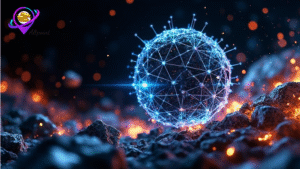Well, it’s official now. The US and UK have inked a new agreement to work together on some pretty big tech stuff. It happened on Thursday. This isn’t a treaty or anything with legal teeth, more like a formal handshake. They’re calling it a memorandum of understanding. Basically, it’s a plan to pool resources on artificial intelligence, nuclear energy, telecoms, and the weird world of quantum computing.
The uses they’re talking about are all over the map. Everything from space travel and military defense to creating more targeted medical treatments. It’s a wide net. The document itself proposes joint research between a bunch of different government agencies on both sides of the pond. But it doesn’t actually change any existing deals between the two countries. It just sets the stage for more cooperation.
What’s Actually in the Plan?
A big part of this is quantum computing. They’re planning to form a special task group to work on the hardware, the software, and how to make different systems talk to each other. This is a topic that’s gotten a lot of attention lately, especially in crypto circles. The worry, I think, is that if a quantum computer gets powerful enough, it could break the encryption that keeps cryptocurrencies secure. It’s a distant threat for now, but it’s on people’s minds.
They’re also looking at next-gen telecoms, specifically 6G networks. And then there’s the nuclear part. The announcement from the White House was pretty bold, calling it the “dawn of a golden nuclear age.” The collaboration will focus on advanced nuclear plants, including fusion reactors.
The Nuclear Angle
Fusion is different from the fission we all know. Fission splits atoms apart—that’s what current reactors and old atomic bombs do. Fusion smashes atoms together. It’s considered much safer. The radiation risk is lower, and the scary possibility of a meltdown isn’t really a thing with fusion designs.
The push for this is about energy independence and building stronger supply chains. But there’s another driver: AI. Those data centers and high-performance computers are incredibly energy-hungry. This kind of power could feed them. It’s interesting, though. Some are already wondering if super cheap, abundant energy from fusion could one day mess with proof-of-work cryptocurrencies. If energy is no longer a barrier, the security of those networks might face new risks.
Money and Next Steps
At a press briefing, President Trump framed it as an economic win. He said the trip had “galvanized $350 billion in deals across many sectors.” He also mentioned a staggering $17 trillion being invested in the US last year in the race to lead in AI and digital tech. Prime Minister Starmer was there too, emphasizing a reliable supply of AI tech.
So what happens next? They’ve given themselves six months to set up a working group. After that, they’ll start having annual meetings to actually collaborate on research. But they were sure to clarify again—no one is legally obligated to spend a dime. This is all voluntary. It’s a statement of intent, a shared to-do list between two allies. We’ll have to wait and see what actually gets crossed off.






